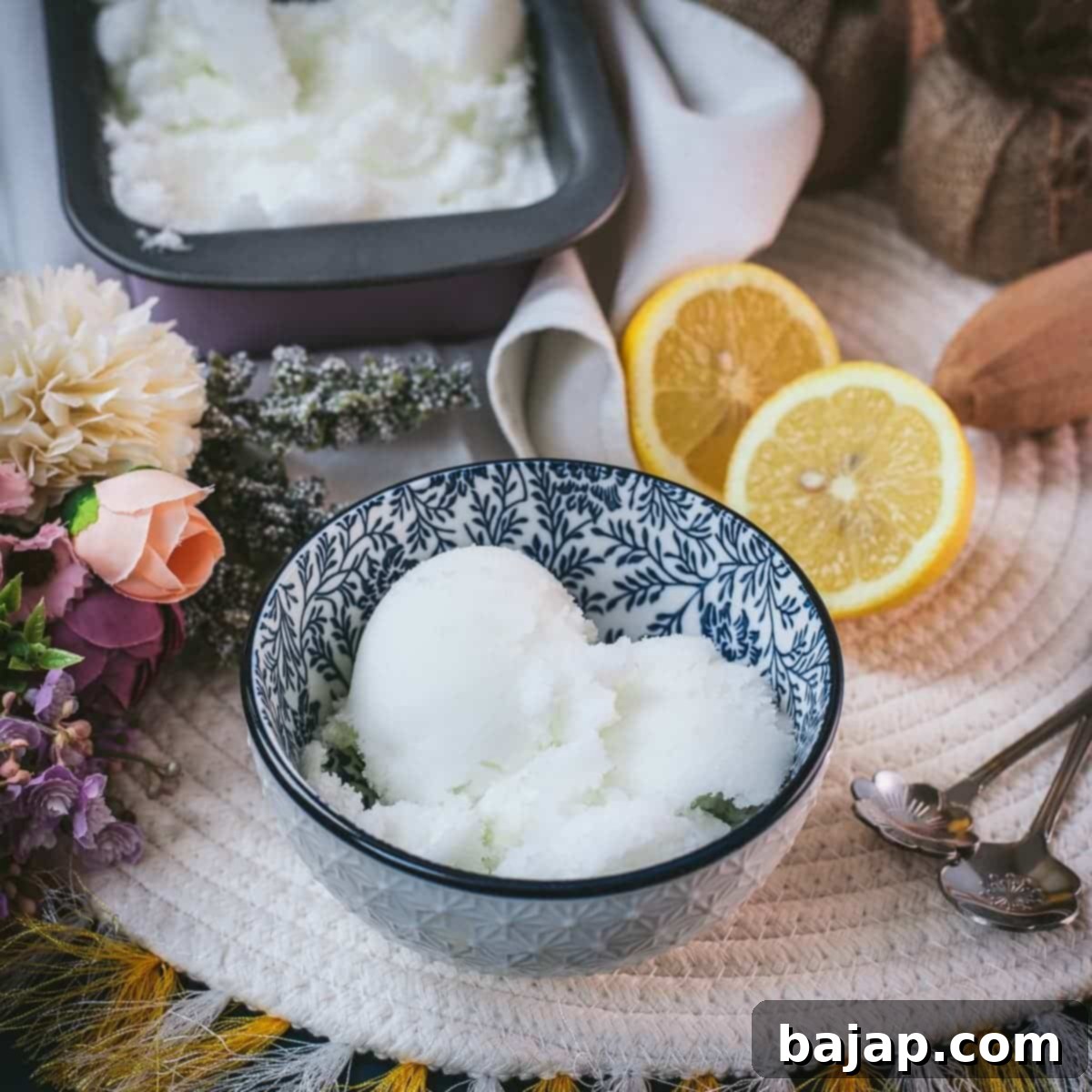The Ultimate Guide to Homemade Lemon Sorbet: KitchenAid & No-Churn Recipes for a Zesty Summer Treat
There’s nothing quite like the invigorating burst of fresh lemon sorbet to cut through the heat of a summer day. This bright, tangy, and incredibly refreshing dessert isn’t just a treat to be savored with a spoon; it’s also the essential star in the sophisticated Italian cocktail, the Sgroppino. Imagine a light, citrusy delight that instantly transports you to sun-drenched orchards with every spoonful. Homemade lemon sorbet offers a purity of flavor and a silky texture that store-bought versions simply can’t match, making it a truly rewarding kitchen project.
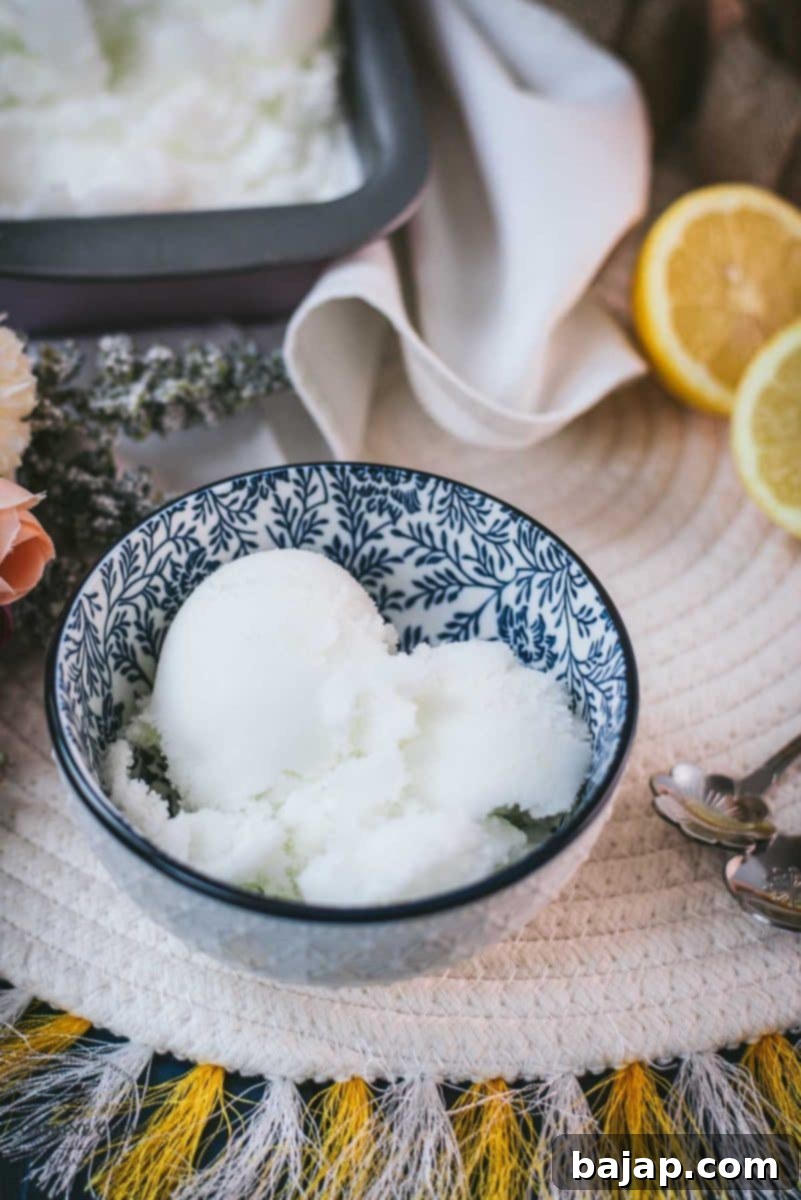
Today, we’re diving into the delightful process of crafting your very own lemon sorbet. We’ll explore two fantastic methods: one utilizing the convenience of the KitchenAid Ice Cream Maker, and another for those who prefer a no-churn approach. Both techniques are surprisingly straightforward, yielding incredibly satisfying results that are perfect for any occasion. Whether you’re a seasoned chef or a beginner in the kitchen, these recipes will empower you to create a truly spectacular citrus dessert. Let’s embark on this culinary adventure and whip up this deliciously easy and incredibly zesty treat!
As a delightful coincidence, June is National Lemon Month, making this the absolute perfect time to celebrate all things lemon. What better way to honor this vibrant fruit than by transforming it into a cool, refreshing sorbet? This recipe isn’t just a dessert; it’s a celebration of summer, freshness, and the pure joy of simple, quality ingredients.
🍋 Why Make Homemade Lemon Sorbet?
Beyond the sheer satisfaction of creating something from scratch, homemade lemon sorbet offers several advantages. You control the sweetness, ensuring it perfectly balances the tartness of the lemons, catering to your exact preference. You also know exactly what goes into it – no artificial flavors, colors, or preservatives, just pure, wholesome goodness. Plus, the fresh, intense lemon flavor of homemade sorbet is unparalleled, far surpassing the often muted taste of commercial options. It’s a wonderfully light alternative to heavier desserts, ideal for cleansing the palate after a rich meal or simply enjoying on its own during a warm afternoon. Moreover, making it at home is a fun, engaging activity that results in a truly memorable dessert experience.
🥘 Essential Ingredients for Perfect Lemon Sorbet
Making a truly exceptional lemon sorbet requires just a few high-quality ingredients. Each component plays a crucial role in achieving that perfect balance of flavor and texture, transforming simple elements into a dazzling dessert. Here’s what you’ll need to gather:
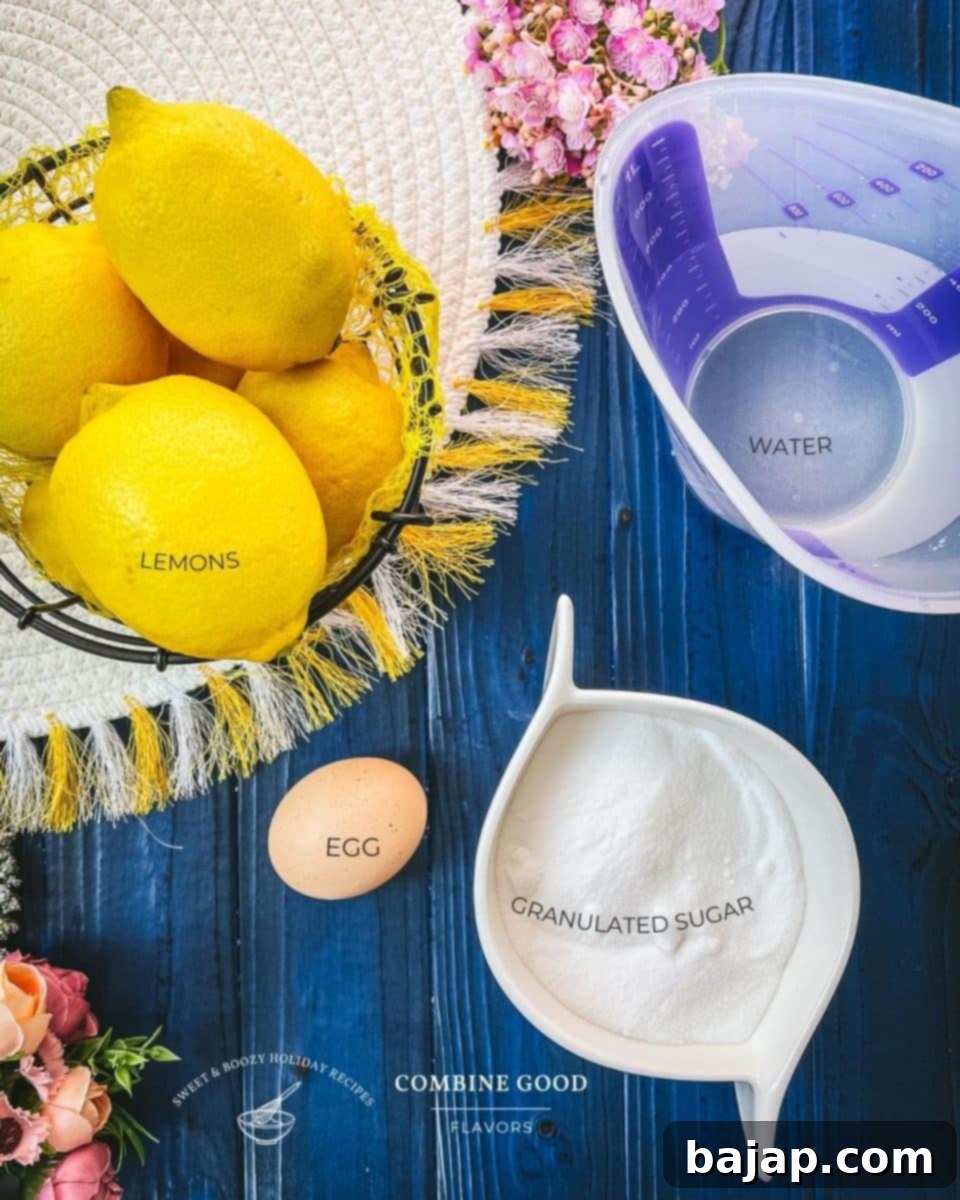
- Organic Lemons: The undeniable heart of our sorbet! You’ll need whole, fresh lemons, and opting for organic is highly recommended. This is especially important because we’ll be using the peels to infuse the syrup, and organic lemons are free from pesticides and waxes, ensuring a cleaner, more vibrant citrus flavor in your final product. Choose lemons that feel firm and heavy for their size, with bright, unblemished, and fragrant skin, indicating they are juicy and ripe.
- Filtered Water: For the purest and most refreshing flavor profile, filtered water is key. Tap water can sometimes contain minerals or chlorine that might subtly alter the delicate taste of your sorbet, so using good quality filtered water will ensure your bright lemon flavor shines through without any unwanted interference.
- Granulated Sugar: This ingredient is more than just a sweetener; sugar is fundamental to the sorbet’s structure and texture. It helps to lower the freezing point of the mixture, preventing it from turning into a solid, unmanageable block of ice. Instead, it creates that desirable smooth, scoopable consistency that defines a great sorbet. Stick to white granulated sugar for its neutral flavor and clear color, which allows the natural brightness of the lemon to dominate without any browning or caramel notes. Brown sugar or other sweeteners can noticeably alter both the taste and the visual appeal of your sorbet.
- Egg White: Here’s a secret ingredient for achieving ultimate smoothness! Just one large egg white, lightly whisked, helps to create a wonderfully light and airy texture. It works by incorporating tiny air bubbles into the mixture, which further prevents large ice crystals from forming during freezing, resulting in a remarkably silky and delicate sorbet. This touch elevates the sorbet from good to exceptional. And don’t toss those precious yolks—they are culinary gold! You can use them to make truly delicious cookies, custards, or other rich treats. I have a couple of great leftover egg yolk cookie recipes on my blog that are perfect for putting them to excellent use.
For precise measurements and quantities for eight servings, please refer to the comprehensive recipe card provided below.
🔪 KitchenAid Ice Cream Maker Instructions: Crafting Silky Lemon Sorbet
Using your KitchenAid Stand Mixer with its specialized Ice Cream Maker attachment makes crafting this zesty sorbet an absolute dream. The churning action ensures a perfectly smooth and refreshing treat every time. Follow these detailed steps for guaranteed success:
Step 1: Extract the Lemon Juice & Preserve Peels
Begin by selecting your fresh, organic lemons. Wash them thoroughly under hot running water, scrubbing gently to remove any potential residues or waxes, then pat them completely dry. Using a sturdy lemon squeezer or a citrus juicer, extract all the juice from the lemons. It’s important to strain the fresh lemon juice through a fine-mesh sieve into a clean bowl to remove any seeds or pulp, which ensures a perfectly smooth sorbet base. Set this bright, strained lemon juice aside. Importantly, *do not discard the lemon peels* after juicing—they hold a wealth of aromatic oils and will be crucial for infusing a deep, complex lemon flavor into your syrup.
Step 2: Infuse the Aromatic Lemon Syrup
In a small to medium-sized saucepan, combine the filtered water, granulated sugar, and the reserved lemon peels. Place the saucepan over medium heat and bring the mixture to a gentle boil, stirring continuously until all the sugar has completely dissolved. Once it reaches a rolling boil, immediately remove the pan from the heat. Allow the lemon peels to steep in the hot syrup for approximately 15 minutes. This infusion process is key; it extracts the essential oils and intense lemon aroma from the peels, enriching your sorbet with a more complex and robust citrus profile. After 15 minutes, carefully remove and discard the softened lemon peels from the syrup.
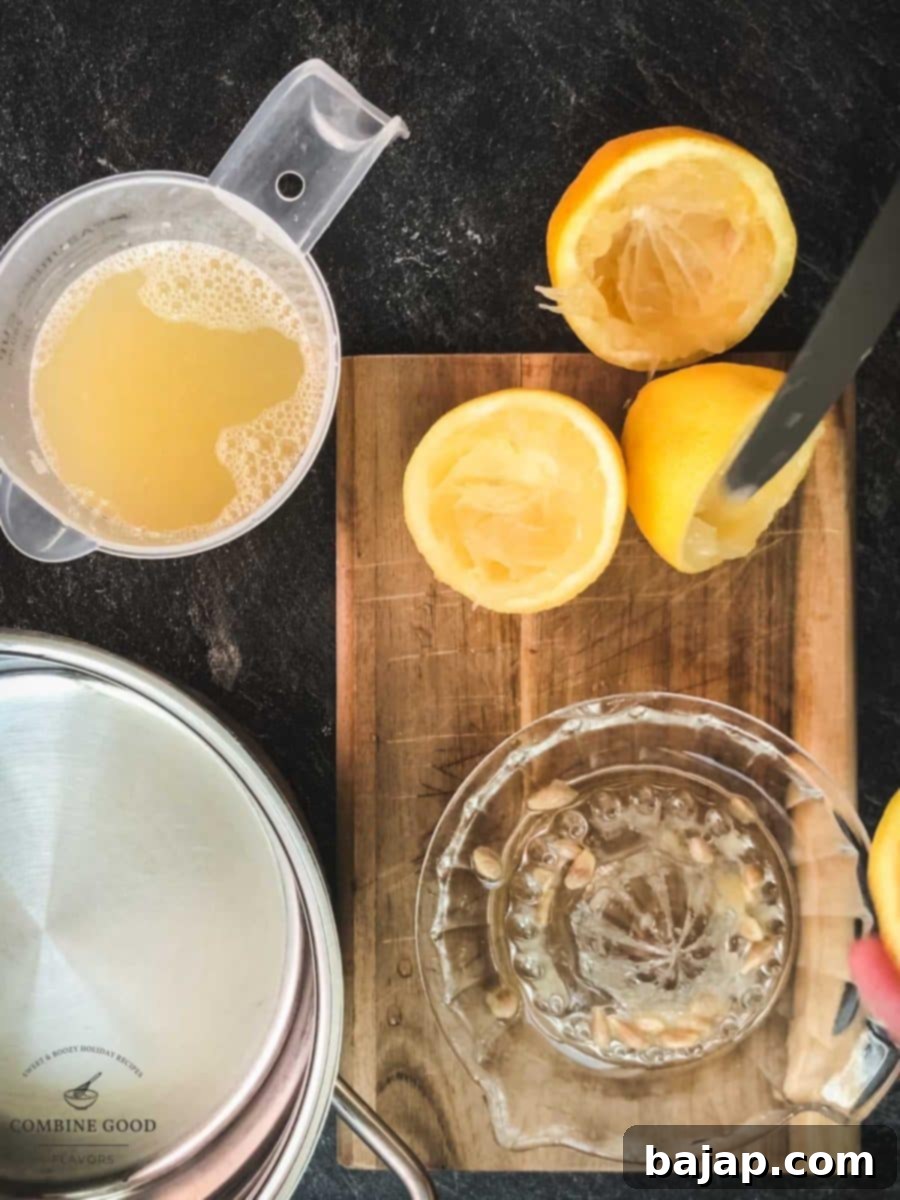
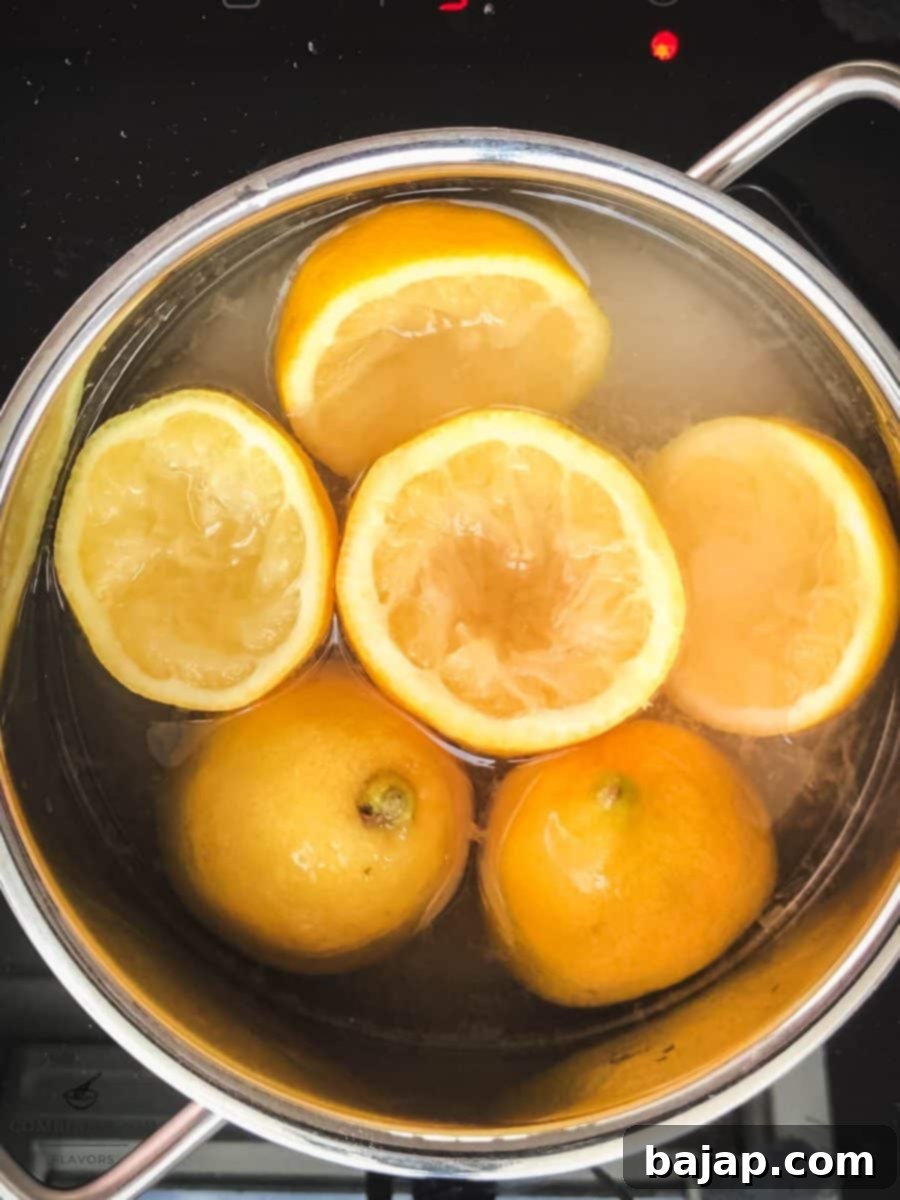
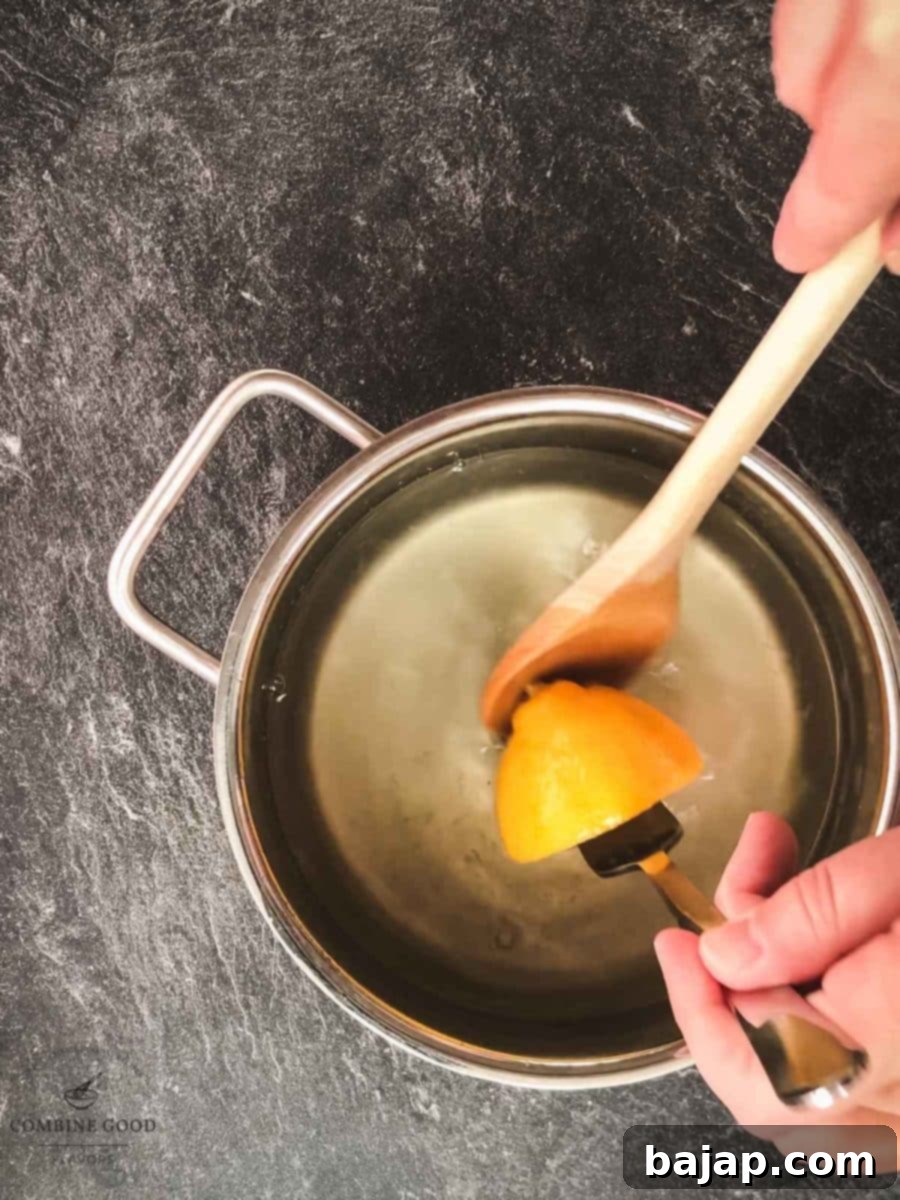
Step 3: Combine Juices and Cool Completely
Pour the strained fresh lemon juice into the infused sugar syrup. Stir gently to ensure everything is well combined. It is absolutely crucial to allow this entire sorbet base mixture to cool down completely to room temperature. For optimal results, go a step further and chill it in the refrigerator for at least 2-3 hours, or even overnight. A thoroughly cold base mixture is essential for the ice cream maker to churn properly and efficiently, producing a firm sorbet without melting the frozen bowl prematurely. Patience here will be greatly rewarded with superior texture.
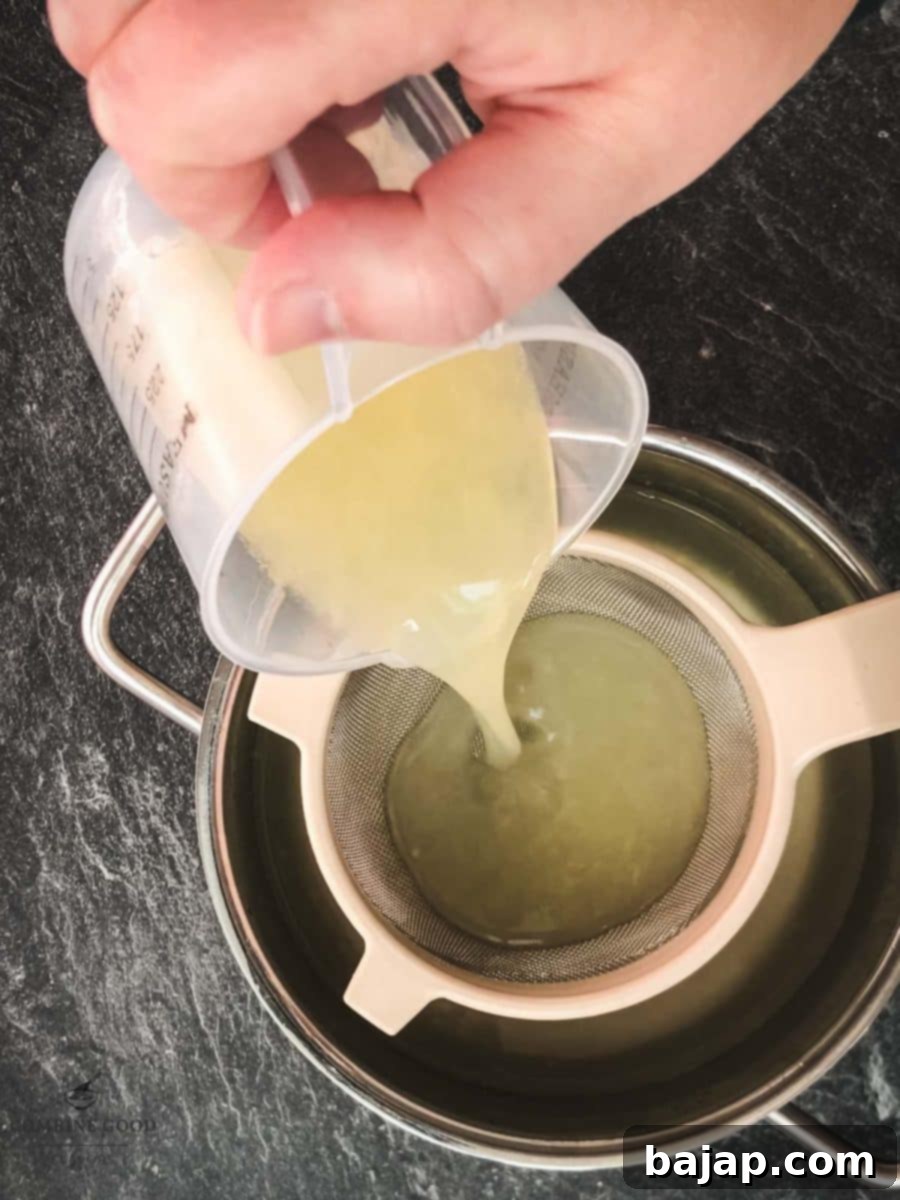
Step 4: Prepare the Egg White for Smoothness
Carefully separate one large egg, taking extra care to ensure absolutely no yolk contaminates the white. In a clean, dry bowl, whisk the egg white until it forms soft, foamy peaks. This process incorporates tiny air bubbles into the egg white, which, when added to the sorbet, helps to prevent the formation of large, icy crystals and contributes significantly to the sorbet’s wonderfully light and airy texture. Remember to save those leftover egg yolks for other delicious recipes, like rich custards or the cookies mentioned earlier; they freeze beautifully for later use.
Step 5: Gently Fold Egg White into Lemon Syrup
Once the egg white is whisked, gently fold it into the completely cooled lemon syrup mixture. Use a spatula and a light hand to incorporate the egg white without deflating it too much. Don’t worry if the mixture appears a bit lumpy or uneven at this stage; the continuous churning action of the ice cream maker will expertly smooth everything out, distributing the air evenly and ensuring a uniform, velvety consistency.
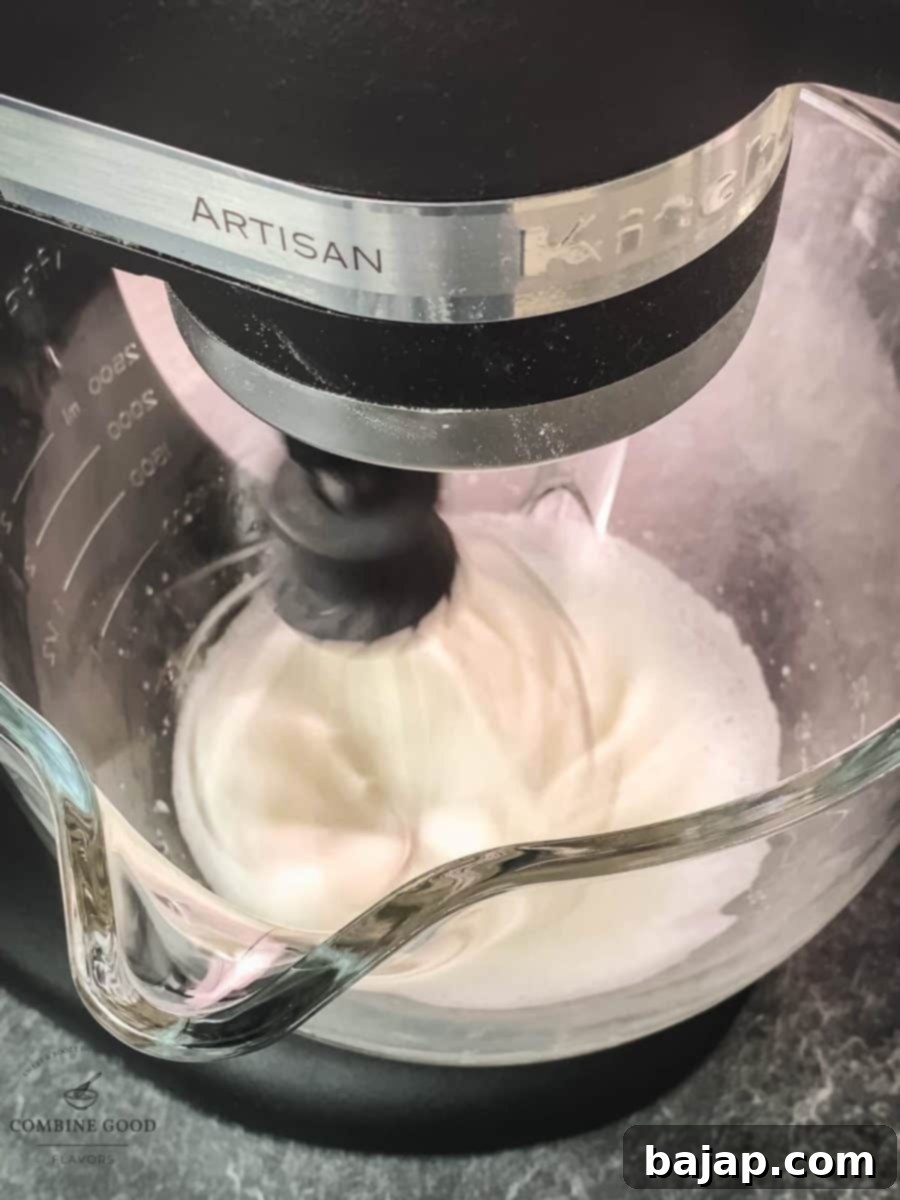
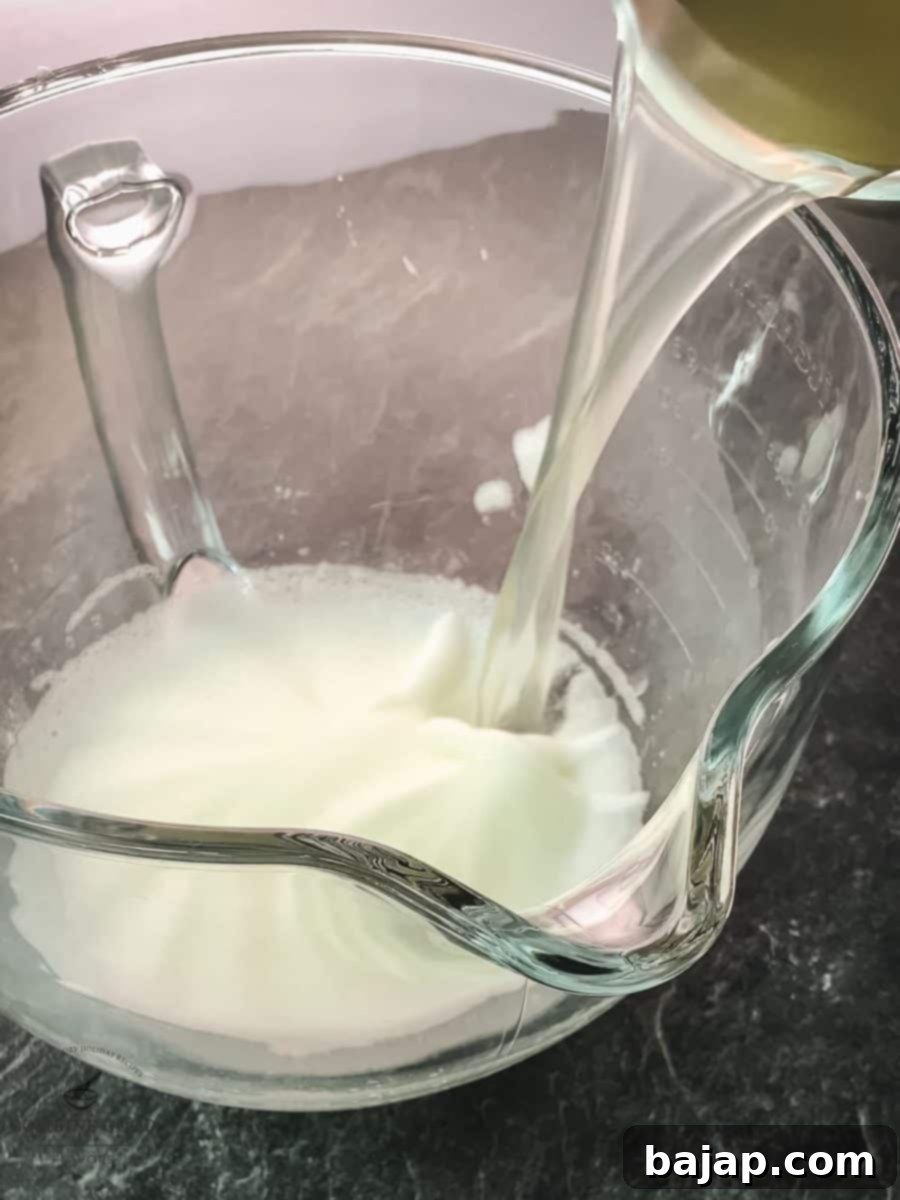
Step 6: Initiate Churning with Your KitchenAid
Ensure your KitchenAid Ice Cream Maker bowl has been frozen for a minimum of 15-24 hours (the longer, the better, as this is crucial for proper freezing). Attach the fully frozen bowl to your KitchenAid stand mixer, making sure the dasher (the mixing paddle) is correctly installed and the drive assembly is securely in place. Turn on the mixer to the lowest speed *before* pouring in the sorbet mixture. It’s critical to start the machine first to prevent the mixture from immediately freezing solid to the bottom of the very cold bowl. Then, slowly and steadily pour the lemon sorbet mixture into the churning bowl.
Step 7: Churn, Transfer, and Firm Freeze
Allow the sorbet mixture to churn for 30-40 minutes, or until it reaches a thick, soft-serve consistency. The exact churning time may vary depending on your kitchen’s ambient temperature and how cold your base mixture was to begin with. The sorbet will be soft but well-formed when ready. Once churned, quickly transfer the soft sorbet to an airtight freezer-safe container, smoothing the top with a spatula to prevent air pockets. Place the container in the freezer for at least 2-4 hours to allow the sorbet to firm up to a perfectly scoopable texture. For optimal results and the firmest consistency, it’s highly recommended to freeze it overnight.
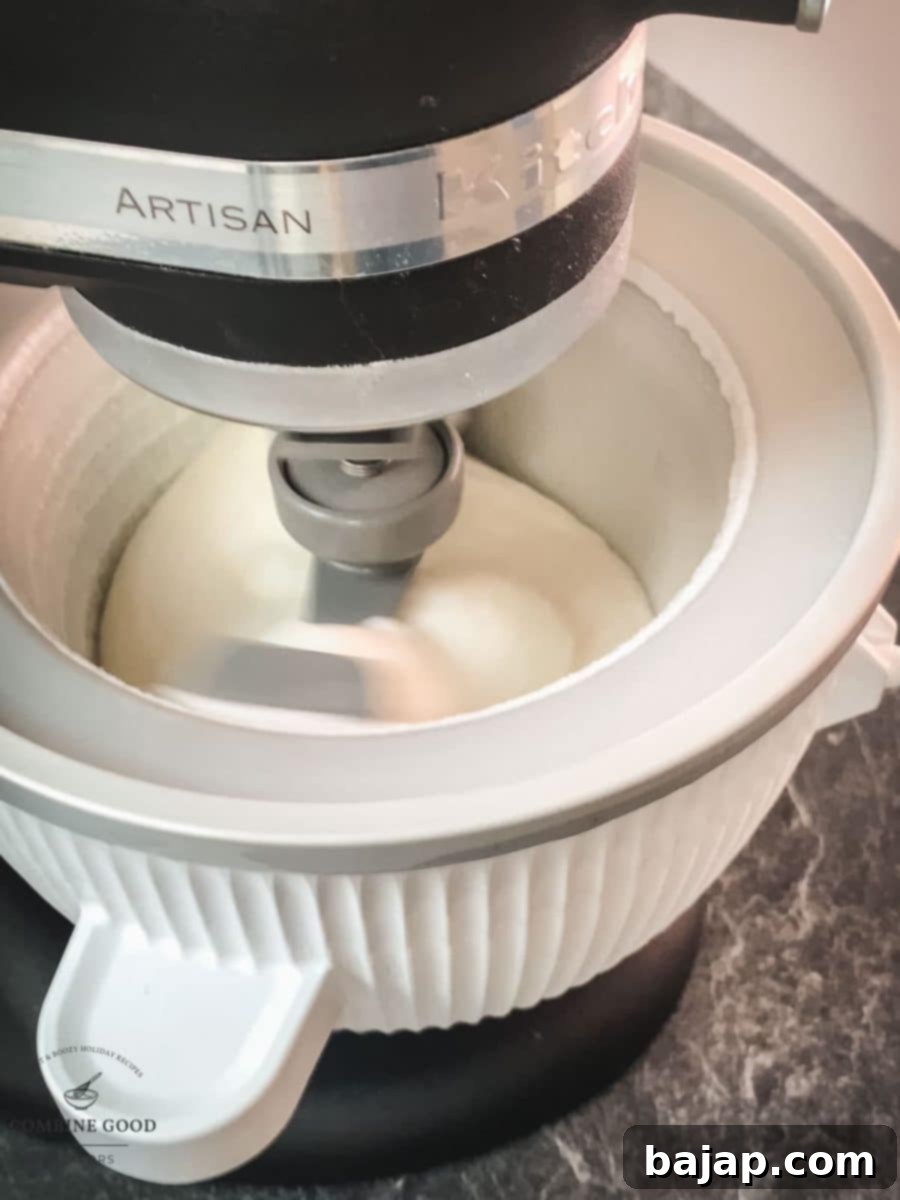
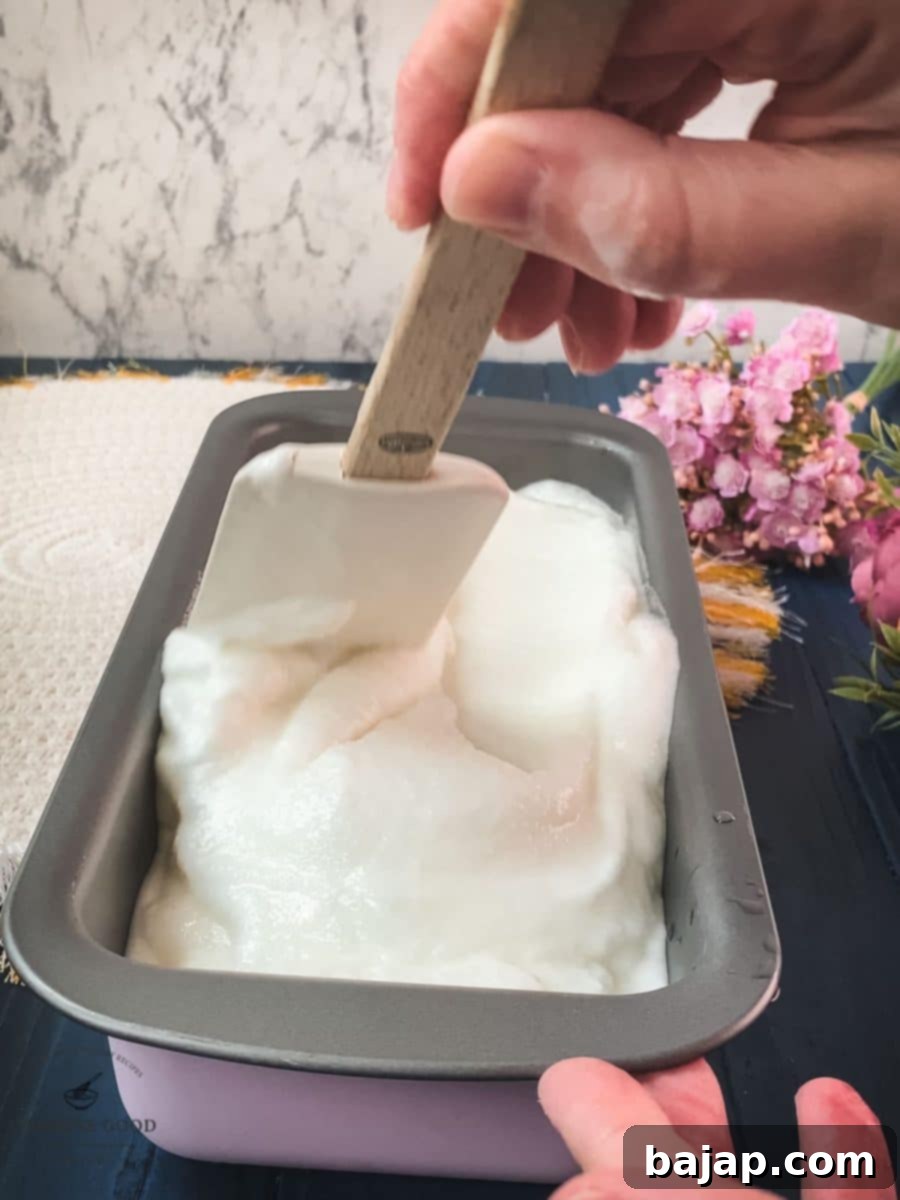
Step 8: Soften and Serve Your Zesty Creation
Before serving your magnificent homemade lemon sorbet, remove it from the freezer and allow it to soften at room temperature for 5-10 minutes. This brief period allows it to reach the ideal scoopable consistency, making it easy to portion and enhancing its velvety texture. Serve it as a wonderfully refreshing dessert on its own, perfect for cooling down on a hot day. It’s also the quintessential ingredient for a vibrant and elegant Sgroppino cocktail, or simply garnish with fresh mint leaves, elegant lemon twists, or even a playful sprinkle of dark chocolate for an unexpected and delightful flavor contrast.
❄️ No-Churn Lemon Sorbet: A Simple Alternative for All
Don’t have an ice cream maker? No problem at all! You can still enjoy delicious homemade lemon sorbet with a simple no-churn method. While it requires a bit more manual effort and attention during the freezing process, the results are wonderfully smooth and satisfying, proving that specialized equipment isn’t always necessary for gourmet results. Here’s how to create a luscious no-churn lemon sorbet:
- Prepare Lemon Syrup Base: In a small saucepan, combine the freshly squeezed juice of approximately 3 organic lemons (strained to remove any pulp and seeds), 1 ¾ cups of filtered water, and 1 cup of granulated sugar. Add the clean, leftover lemon peels from the juiced lemons to the mixture.
- Boil and Infuse for Flavor: Bring the mixture to a gentle boil over medium heat, stirring continuously until the sugar is fully and completely dissolved. Once boiling, remove it from the heat and allow the lemon peels to infuse their aromatic oils and deep lemon essence for about 15 minutes. This step is crucial for achieving a rich, authentic lemon flavor. After infusing, carefully remove and discard the peels, and then let the syrup cool completely to room temperature. For an even better head start and quicker freezing, chill the syrup in the refrigerator for at least an hour before proceeding.
- Mix and Begin Freezing: Once the lemon syrup is thoroughly chilled, gently fold in one whisked egg white (prepared as in Step 4 of the KitchenAid method). Pour the combined mixture into a shallow, freezer-safe container. A metal baking dish or a glass casserole dish works particularly well for this method as it allows for faster freezing and easier stirring. Place the container in the freezer.
- Stir Vigorously to Prevent Ice Crystals: This is the most important step for achieving a smooth, non-icy no-churn sorbet. Every 30-45 minutes, remove the container from the freezer and vigorously stir the mixture with a fork or whisk. As the edges begin to freeze and ice crystals form, scrape them into the center and continue to break up any large ice formations. Stir thoroughly until the entire mixture becomes a smooth, slushy consistency. Repeat this process diligently for approximately 3-4 hours, or until the sorbet is firmly frozen and uniformly smooth. The frequent stirring effectively prevents large, undesirable ice crystals from forming, cleverly mimicking the continuous churning action of an ice cream maker.
- Final Freeze and Serve: Once the sorbet has reached a smooth, firm consistency after several rounds of dedicated stirring, let it freeze undisturbed for at least 1-2 more hours (or overnight) to fully set and harden. Before serving, allow it to soften at room temperature for 5-10 minutes for optimal scoopability and the best texture.
This no-churn method, though requiring a bit more hands-on time, creates a delightful texture that, while slightly different from an ice cream maker, is remarkably smooth, incredibly refreshing, and just as satisfying. It’s a fantastic and accessible way to enjoy homemade sorbet without needing specialized equipment.
🌡️ Storage Tips for Homemade Lemon Sorbet
To keep your homemade lemon sorbet tasting its absolute best and maintain its creamy, scoopable texture over time, proper storage is paramount. Immediately after churning or after completing the final no-churn freezing step, transfer your freshly made sorbet into an airtight freezer-safe container. A shallow container with a tight-fitting lid is ideal, as it minimizes the sorbet’s exposure to air, which is the primary culprit for causing undesirable ice crystals to form.
For an extra layer of protection against freezer burn and the development of ice crystals on the surface, press a piece of parchment paper or plastic wrap directly onto the surface of the sorbet before securely sealing the container with its lid. This creates an effective barrier that helps to lock in moisture, preserve the vibrant flavor, and protect the texture.
Stored correctly, homemade lemon sorbet can last in the freezer for up to one month. While it’s generally best enjoyed within the first week for peak freshness and the most intense flavor, it will remain perfectly delicious and enjoyable for longer periods. Always remember to let it soften for a few minutes (typically 5-10 minutes, depending on your freezer’s temperature) at room temperature before serving to achieve that wonderfully smooth, easy-to-scoop consistency that makes homemade sorbet so delightful.
💡 Tips for the Perfect Lemon Sorbet
Achieving a truly exceptional lemon sorbet isn’t just about following the steps; it’s about understanding the nuances that elevate a good sorbet to a great one. Here are some key tips:
- Embrace Freshly Squeezed Juice: This cannot be stressed enough. Bottled lemon juice often contains preservatives, added sugars, and lacks the vibrant, complex, and aromatic flavor of freshly squeezed, ripe lemons. The difference in taste is significant.
- Chill Your Base Thoroughly: Whether you’re using an ice cream maker or employing the no-churn method, starting with a very cold mixture (chilled in the refrigerator for hours) is absolutely crucial. A warm base will either not freeze properly or will take too long, resulting in a coarse, icy texture.
- Don’t Skip the Egg White (or a suitable alternative): While some traditional sorbet recipes omit it, the egg white (or a tiny pinch of xanthan gum for a vegan option) significantly improves the texture. It acts as an emulsifier and helps to incorporate air, making the sorbet smoother, lighter, and far less icy.
- Taste and Adjust Sweetness: Lemons vary naturally in their tartness. Always taste your lemon syrup *before* freezing and adjust the sugar content if needed. Remember that cold temperatures diminish the perception of sweetness, so your syrup should taste slightly sweeter than you might prefer to drink.
- Thoroughly Scrape Down Sides: When preparing the sugar syrup, ensure all sugar crystals are dissolved by scraping the sides of the saucepan. More critically, during the no-churn freezing process, vigorously and thoroughly scrape down the sides and bottom of your container with each stir to prevent large ice crystals from clinging and growing.
- Consider a Pinch of Salt: A tiny pinch of salt (just a quarter teaspoon for the whole batch) can surprisingly enhance the lemon flavor and balance the sweetness, much like salt in baking. It’s an optional but often rewarding addition.
🥚 Delicious Leftover Egg Yolk Recipes
Since this recipe for lemon sorbet specifically calls for only one egg white, you’ll most likely find yourself with a few egg yolks left over. It would be a culinary crime to let these versatile ingredients go to waste! Egg yolks are incredibly rich and can be used in a variety of decadent and flavorful recipes. Here are some fantastic ideas to put those golden treasures to excellent use:
- Homemade Advocaat Egg Liqueur: A rich, creamy, and delightful alcoholic beverage, perfect for sipping or adding to desserts.
- Walnut Cookies: Egg yolks add richness and act as a wonderful binding agent for these nutty delights, creating a tender crumb.
- Leftover Egg Yolk Cookies with Jam: A perfect and creative way to use those yolks in tender, flavorful cookies that pair beautifully with a fruit jam filling.
- Homemade Vanilla Ice Cream: Many traditional and gourmet ice cream recipes rely heavily on egg yolks for a smooth, rich, and custard-like base (often called French-style ice cream).
- Linzer Cookies with Egg Liqueur: A unique and sophisticated twist on classic Linzer cookies, incorporating a hint of egg liqueur for extra depth.
- Sour Cream Cookies: Egg yolks contribute significant moisture, tenderness, and richness to these soft and delightful cookies.
- Homemade Vanilla Sauce: A luxurious and versatile dessert sauce, often thickened and enriched with egg yolks for a silky smooth finish.
🍽 Essential Equipment for Lemon Sorbet Making
Having the right tools at hand can make the process of creating homemade lemon sorbet even smoother, more efficient, and ultimately more enjoyable. While some items are optional for the no-churn method, they are highly recommended for the best results. Here’s a comprehensive list of equipment you’ll find useful:
- Lemon Squeezer / Juicer: Absolutely essential for efficiently and thoroughly extracting fresh lemon juice. A sturdy hand juicer will ensure you get every last drop, maximizing flavor.
- Saucepan: A medium-sized saucepan is perfect for preparing the sugar syrup and allowing the lemon peels to infuse their aromatic oils.
- Wooden Spoon and Tablespoon: Basic but vital tools for stirring the syrup, measuring, and general mixing during preparation.
- Fine-Mesh Strainer: Crucial for two main tasks: removing any pulp and seeds from the freshly squeezed lemon juice and separating the infused lemon peels from the finished syrup. This ensures a perfectly smooth and clear sorbet base.
- KitchenAid Stand Mixer (and specific accessories): For the KitchenAid method, these are indispensable:
- Whisk Attachment: Used for vigorously whipping the egg white to soft peaks, which contributes to the sorbet’s light and airy texture.
- Standard Mixing Bowl: The regular bowl that accompanies your KitchenAid mixer, used for whisking and initial mixing.
- Ice Cream Maker Attachment: This specialized attachment, particularly its pre-frozen bowl and dasher, is the core piece of equipment for churning the sorbet to its ideal consistency. Ensure its bowl is thoroughly pre-frozen for 15-24 hours.
- Airtight Freezer-Safe Container: Essential for storing your finished sorbet in the freezer. Containers specifically designed for ice cream or sorbet can help minimize ice crystal formation and freezer burn.
- Shallow Freezer-Safe Container (for no-churn method): If you’re going the no-churn route, a metal baking dish or a glass casserole dish with a larger surface area is ideal for quicker freezing and easier manual stirring.
- Hand Whisk or Sturdy Fork (for no-churn method): These are your primary tools for regularly stirring and breaking up ice crystals during the freezing process of the no-churn method.
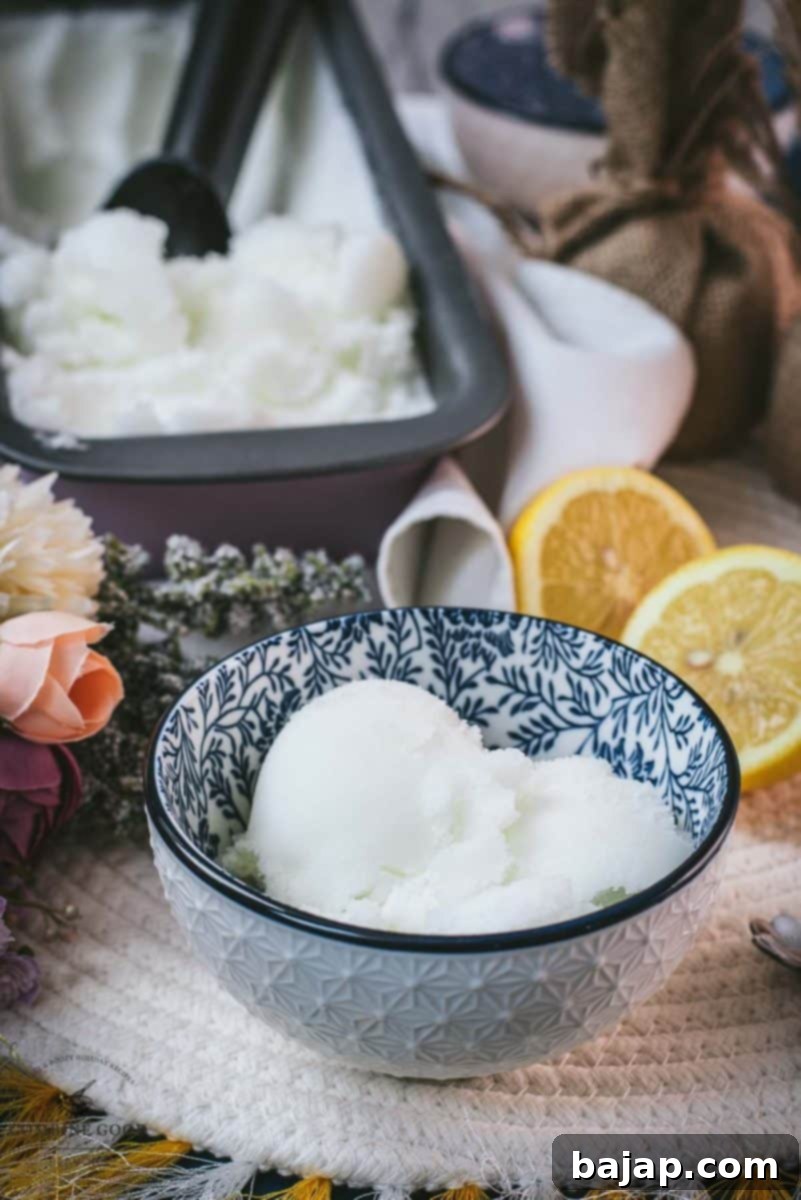
🙋🏻 Frequently Asked Questions about Lemon Sorbet
For the absolute best results and to ensure your homemade sorbet (or ice cream) freezes perfectly, it’s crucial to freeze the KitchenAid Ice Cream Maker bowl for at least 15 hours. However, I highly recommend going the extra mile and freezing it for a minimum of 24 hours. This extended freezing time guarantees that the cooling liquid inside the double-walled bowl is completely solid and at its coldest possible temperature. This is vital for efficient churning, preventing any issues with the mixture not freezing properly during the churning process, and ultimately ensuring a firm, smooth, and delicious final consistency.
To properly store leftover egg yolks and prevent them from drying out or becoming overly gelatinous, place them in an airtight container. To maintain their freshness, cover them with a tiny amount of water (just enough to create a thin layer over the yolks) or brush them lightly with a neutral oil before sealing. Store them promptly in the refrigerator, where they will remain good for up to two days. If you need to keep them for a longer period, you can freeze them for up to three months. When freezing, gently whisk the yolks and mix them with a pinch of salt (about ⅛ teaspoon per four yolks for savory applications) or sugar (about ⅛ teaspoon per four yolks for sweet dishes). This additive helps prevent them from developing an unappealing gummy texture once thawed.
The primary and most significant difference between sorbet and ice cream lies in their core ingredients. Sorbet is a refreshing, dairy-free, and fat-free frozen dessert typically made from fruit puree or juice, sugar, and water. Its smooth, scoopable texture is achieved by a careful balance of sugar (which lowers the freezing point) and air. Ice cream, on the other hand, is a dairy-based dessert that contains milk, cream, sugar, and often egg yolks, which contribute to its richer, creamier, and denser consistency due to its fat and protein content. Sorbet offers a lighter, more intense fruit flavor, while ice cream provides a richer, more indulgent experience.
While you can technically use bottled lemon juice as a substitute, it is strongly and highly recommended to use freshly squeezed lemon juice for the best possible flavor and aroma in your homemade sorbet. Bottled juices often lack the vibrant, zesty, and complex taste profile of fresh lemons, and they can sometimes contain preservatives or added sugars that may subtly alter the final taste and texture of your sorbet. If using bottled juice is your only option, choose a high-quality, unsweetened variety, but be aware that the flavor of your sorbet might not be as bright, pure, and fresh as with freshly squeezed lemons.
Achieving a perfectly smooth sorbet texture involves several key factors. First, ensure your sugar-to-liquid ratio is correct, as sugar is vital for lowering the freezing point and preventing large ice crystals. Second, thoroughly chill your sorbet base mixture before it goes into the ice cream maker or freezer; a cold start is essential. Third, the addition of an egg white (as used in this recipe) or a tiny amount of a stabilizer like xanthan gum (for vegan options) significantly enhances smoothness by incorporating air and stabilizing the mixture. For no-churn sorbet, consistent and vigorous stirring every 30-45 minutes is absolutely vital to break down ice crystals as they form. Finally, always allow the sorbet to soften slightly at room temperature (5-10 minutes) before serving; this final step ensures the best, most appealing scoopable consistency.
🍋 More Zesty Recipes Using Lemons
Lemons are incredibly versatile and bring a bright, zesty, and refreshing flavor to a wide array of dishes, from invigorating drinks to decadent desserts and savory meals. If you’ve enjoyed the process and delicious outcome of making this lemon sorbet, you’ll surely love exploring these other fantastic lemon-centric recipes that celebrate this wonderful citrus fruit:
- Lemon White Chocolate Cookies: A delightful blend of sweet white chocolate balanced perfectly with tangy lemon.
- No-Bake Lemon Cheesecake: A creamy, refreshing dessert with minimal effort, perfect for warm days.
- How to Get the Most Fresh Lemon Juice: Essential tips and tricks for maximizing the yield from your lemons.
- Classic Gin and Tonic with Lemon: A timeless cocktail elevated by the invigorating zest and juice of fresh lemon.
- How to Make a Perfect Lemon Twist: Learn to craft elegant garnishes like a professional mixologist.
- Refreshing Lemon Punch: An ideal beverage for gatherings, parties, and celebrations, bursting with citrus flavor.
- Aromatic Lavender Lemon Muffins: A unique and fragrant combination of floral lavender and bright lemon.
- Delicate Lemon Sugar Cookies: Simple yet incredibly flavorful cookies with a hint of lemon zest.
- How Much Lemon Juice is in One Lemon?: Practical advice for cooking and baking to ensure you have enough juice.
- Raspberry Lemon Drop Martini Recipe: A vibrant, elegant, and perfectly balanced cocktail with fruity and tart notes.
- Best Drinks with Lemon: A curated collection of refreshing lemon-infused beverages for any time of day.
- Celebrating National Lemon Month: Discover more about this special month dedicated to the versatile lemon.
- Limoncello Vodka Cocktail: For those who enjoy a spirited citrus kick with an Italian flair.
- Limoncello Martini Recipe: A smooth and flavorful Italian-inspired drink, perfect for a sophisticated evening.
If you make this delightful lemon sorbet recipe, please let me know how you liked it by giving it a ★★★★★ star rating and leaving a comment below. Your feedback is truly awesome and incredibly helpful for others discovering great recipes! You can also sign up for our Newsletter to receive weekly delicious homemade recipes directly in your inbox, or follow me on Pinterest or Instagram and share your delightful creation with me. Just tag me @combinegoodflavors and hashtag #combinegoodflavors, so I don’t miss it. Happy churning and enjoying your zesty homemade treat!
📖 Recipe Card: Delicious Homemade Lemon Sorbet {Ice Cream Maker}
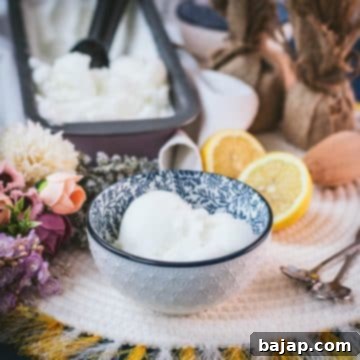
Delicious Homemade Lemon Sorbet {Ice cream maker}
Nora
Prevent your screen from going dark
Save Recipe
Saved!
Pin Recipe
10
minutes
1
hour
1
hour
10
minutes
Dessert
Global cuisine
